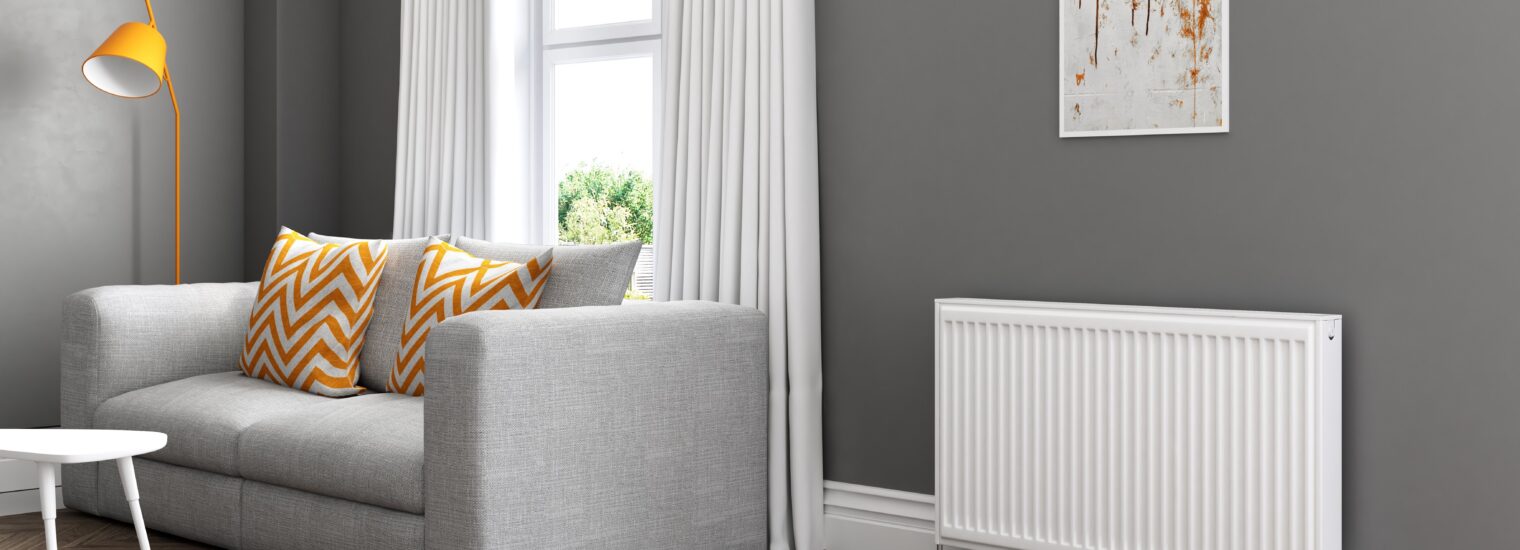When you’re looking to increase the Energy Performance Certificate (EPC) ratings of existing homes to help bring residents out of fuel poverty, reduce energy bills and emissions, whilst drastically improving comfort levels, it’s hard to look further than the use of air source heat pumps to replace elderly inefficient boilers. But how do you share the heat from the new system? Stelrad is seeing its radiators installed increasingly to work alongside ASHPs up and down the country, as popularity of the new renewable heating systems increases as we head towards the Government’s 2025 deadline for a stop to fossil fuelled heating systems being installed in new build homes. It seems that installers and social housing providers in particular, are keen to look at renewable heating systems, matched with modern energy efficient radiators, on heating system replacement projects as well as new build developments.
There’s a cutting-edge heating system replacement project taking place in East Devon, being undertaken by PH Jones, part of Centrica in conjunction with East Devon Council. The sheltered scheme is in the East Devon district and sees 78, 1950 built, semi-detached bungalows and houses homes getting replacement heating systems. The East Devon Council which owns the properties made the decision to replace the E7 storage heaters or solid fuel heating systems and replace them with modern renewable heating systems utilising Vaillant AROtherm air source heat pumps, Mixergy unvented heat pump cylinders with a built in solar PV modulating diverter, low water volume Compact radiators from Stelrad, TRV’s on each radiator, mono crystalline high output photovoltaic solar panels – providing 375w each – with the solar array sized for maximum energy generation, an optimised solar PV inverter and an upgraded loft insulation package, providing 400mm of insulation in each roof space.
The project is being partly funded by the Green Homes Grant, but is heavily subsidised by the East Devon Council, investing in their residents. The project should be completed by the end of March 2021.
The properties selected for the upgrade work are all part of a sheltered housing scheme with EPC ratings of E or below. The aim of the project is to bring the residents out of fuel poverty by reducing energy usage whilst improving the comfort of the homes whilst drastically reducing carbon impact of the properties. Energy usage reduction and carbon reduction targets will move these properties from an EPC rating of E or below up to a CC or above. In reality the majority of the properties will achieve an EPC B and above – so the improvement will be significant.
The inclusion of Stelrad radiators as the means of sharing heat from the hot water generated by the heat pump is a sign of increasing confidence and awareness of the role of radiators in heating systems utilising low temperature heating to warm homes in the UK. An established means of doing so in many other countries – including in Scandinavia and Canada – there is a requirement for either larger radiators, more radiators or the adoption of the K3 format radiators that come with three panels and three sets of fins providing added metal surface to share more heat, but from a similar radiator footprint as traditionally used for K1 and K2 format radiators.
Ian Mather, Business Development Manager at P H Jones, Centrica’s specialist social housing division said: “Now the first units are in, early indicators and tenant feedback suggests that the project will over-deliver against the targets we’ve set – in terms of environmental benefits and by making residents’ homes warmer and more comfortable for less.
“We’re committed to being at the forefront of the UK’s transition to low carbon heating, drawing on the expertise within our organisation and working with partners who place a similar emphasis on sustainability – to drive progress to the road for net zero. Collaboration has been at the heart of the project, which can now be used as a best practice example in the low carbon economy.”
Stelrad’s Head of Marketing, Chris Harvey confirms the option offered by radiators: “As with all heating systems – whether renewable or traditional boiler driven – the radiators selected must be sized correctly to provide the total metal surface area required to share the correct volume of heat – the right number of BTUs – within a home. We provide a free heat loss calculator and radiator sizing software package on our website that has been downloaded thousands of times by installers and specifiers so they can correctly size radiators based on the size of a room, the materials used to build the home and the size and number of windows and doors in the room. It’s a speedy and highly reliable way to check that you have specified the right sized radiators to use with whichever form of heat provider you use – heat pump or traditional boiler.”

